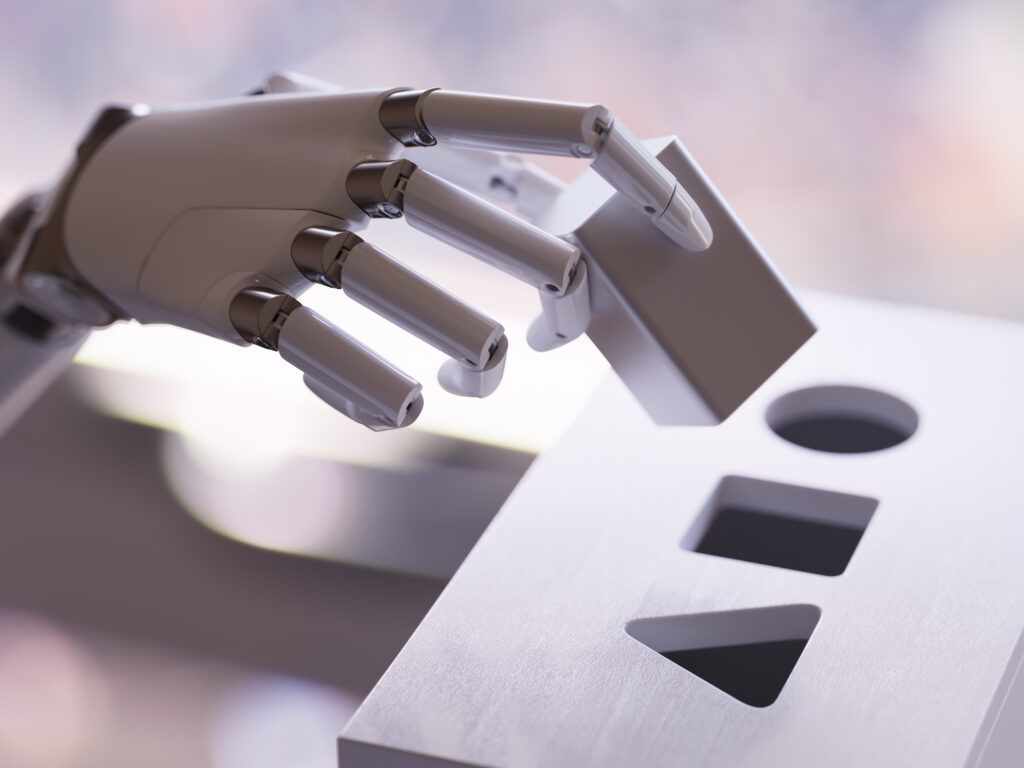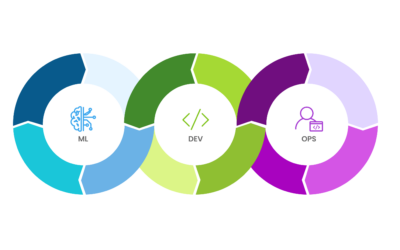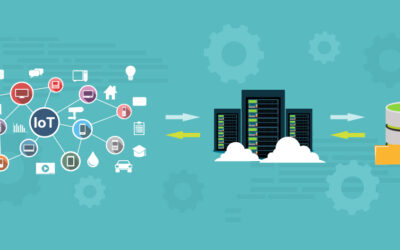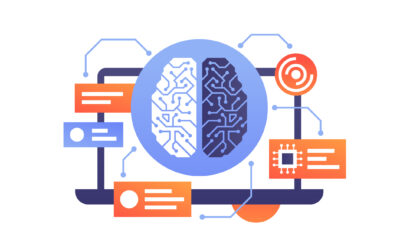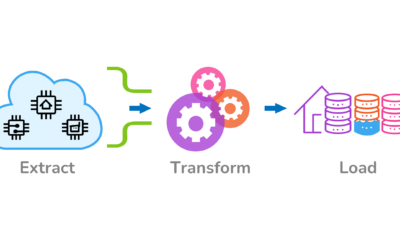Machine Learning is a subfield of AI, an application or program in which machines can learn from their experiences or train data to make predictions. The Machine Learning approach differs from traditional programming in that the computer learns automatically, detecting patterns and creating its own rules, making it more accurate and easier to maintain.
Stanford University professor Andrew Ng states, “Machine Learning (ML) is the science of getting computers to act without being explicitly programmed.” Instead of writing code, the user feeds the dataset to the generic algorithm, and the algorithm or the machine will operate with logic based on the given data. Just as our brains use our experience to help us improve at a task, so does the computer.
To illustrate, imagine training a machine learning algorithm to distinguish between car and bus images. Initially, you provide the algorithm with a dataset of labeled images, categorizing each as a car or a bus. Through this process, the algorithm identifies patterns in the data, such as the relative size and design variations between cars and buses. Over time, it becomes proficient in correctly identifying cars and buses in new images.
Machine learning offers powerful problem-solving capabilities and finds application in various domains. It is employed in diverse fields like spam filtering, fraud detection, and image recognition. As machine learning technology progresses, we can anticipate witnessing even more groundbreaking applications in the future.
Types of Machine Learning Systems
Machine Learning systems are classified according to how they are trained to learn incrementally, how they generalize, how data points are compared or built to detect patterns, and how each type is suited to different tasks and data. The output model, which depends on the type of learning system used, can be combined with other Machine Learning systems and data components to create the right solution. The mentioned categories primarily focus on how machine learning algorithms are trained or interact with labeled or unlabeled data.
Deep Learning
Deep learning is a subfield of machine learning that aims to mimic the human brain’s neural networks to process data and create patterns for decision-making. It’s a method of machine learning that uses algorithms inspired by the structure and function of the brain’s neural networks.
Deep learning uses a layered structure of algorithms called neural networks, where each layer takes its input from the previous layer, transforms it, and passes the output to the next layer. These layers are designed to model high-level abstractions in data, which is why there are often many layers used, hence the term “deep.”
The layers in a deep neural network can learn representations of data with multiple levels of abstraction. These representations are learned via models that are built by composing simple but non-linear modules that each transform the representation at one level (starting with the raw input) into a representation at a higher, slightly more abstract level.
Here’s a simple analogy. Suppose you are trying to recognize a person’s face. The first few layers of the neural network may recognize edges, the next few layers may recognize collections of edges as shapes (like a circle or a square), the next layers might identify higher-level features like an eye or a nose, and the final layers might identify a face.
Deep learning excels at identifying patterns in large, complex data collections like images, sound, and text. This is why it is often used for tasks like image recognition, speech recognition, natural language processing (NLP), and recommendation systems.
Neural networks are a critical component of deep learning, a computing model whose design is inspired by the structure and function of the human brain. It is a fundamental concept in artificial intelligence (AI) and, more specifically, in machine learning and deep learning.
At a high level, a neural network comprises interconnected layers of nodes, or “neurons.” Each neuron takes in inputs, performs calculations on them, and passes the result to the next layer. These calculations typically involve assigning weights to the inputs and adding them together, then applying an activation function to the sum. The weights are learned during training when the network is shown many examples of input data and the desired output.
Types of Neural Networks
1. Feedforward Neural Networks (FNN): These are the simplest type of artificial neural network. Information in these networks travels only in one direction—from the input layer, through any number of hidden layers, to the output layer.
2. Convolutional Neural Networks (CNN): These are mainly used for image processing, recognition, and classification tasks. They are especially able to recognize patterns in the data regardless of their position and orientation.
3. Recurrent Neural Networks (RNN): These networks are specially designed to work with sequence data. They have “memory” in the form of loops that allow information to flow from one step in the sequence to the next, which makes them useful for time-series prediction, natural language processing, and more.
4. Generative Adversarial Networks (GAN): These consist of two neural networks contesting one another in a zero-sum game framework. They are used to generate synthetic data that is similar to some real data.
5. Transformer Networks: These are used in natural language processing tasks and work by transforming one sequence into another. They are behind many state-of-the-art models for machine translation and text generation, like BERT, GPT-2, and GPT-3.
Large language models (LLMs) like BERT (Bidirectional Encoder Representations from Transformers), GPT-2 (Generative Pre-trained Transformer 2), and GPT-3 (Generative Pre-trained Transformer 3) are examples of transformer networks (and a type of generative AI). These models have revolutionized natural language processing tasks and have achieved remarkable performance in tasks such as machine translation, text generation, question answering, sentiment analysis, and more.
Transformer networks are particularly well-suited for processing sequential data, such as sentences or documents. They employ a self-attention mechanism that effectively captures dependencies between different words in a sentence. By considering the entire context of a sentence or document, transformer-based models can generate more coherent and contextually appropriate responses.
BERT, GPT-2, and GPT-3 are among the most notable examples of large-scale transformer-based models that have been pre-trained on vast amounts of text data. They have demonstrated impressive capabilities in understanding and generating human-like text, leading to significant advancements in natural language understanding and generation tasks.
Generative AI Applications
Generative AI uses artificial intelligence techniques, specifically generative models, to create or generate new data, such as images, text, or audio, that resembles the patterns and characteristics of the training data it has been exposed to. These applications leverage advanced machine learning algorithms to learn and capture the underlying patterns in the data, enabling them to generate new, original content.
Generative AI models, such as generative adversarial networks (GANs) and transformer networks, are designed to generate data similar to the training data but not explicitly present in the original dataset. These models learn the underlying distribution of the training data and use it to generate new samples that exhibit similar characteristics and patterns.
Generative AI applications are useful in various domains, including image synthesis, text generation, music composition, and more. They have the potential to revolutionize creative industries, assist in data augmentation for machine learning tasks, enable novel content creation, and provide realistic simulations for training and testing purposes.
Supervised Machine Learning
Supervised machine learning involves algorithm learning from a labeled dataset. Each instance in the dataset includes both the input data and the correct output. This approach is widely used for tasks like classification and regression. For example, predicting housing prices based on a dataset of housing features and their corresponding prices would be a supervised learning task.
This training method is called supervised learning, as it involves a human “instructing” the model on its tasks.
- Regression: The task here is to predict a continuous output value, such as the price of a building, based on features such as location, size, and age.
- Classification: In classification tasks, the goal is to predict a categorical output. For example, assessing if an email is spam or not by analyzing its content and various characteristics.
Unsupervised Machine Learning
Unsupervised machine learning is when the algorithm is not given any output labels. The algorithm must discover the underlying patterns or structure in the data by itself. This is useful in exploratory analysis, where we don’t know what we’re looking for. It includes techniques like clustering and dimensionality reduction.
- Clustering: Here, the aim is to group similar instances. For instance, a clustering algorithm could identify different customer segments in a dataset of customer behavior data.
- Dimensionality Reduction: This is often used when dealing with very high-dimensional data and can be used to identify fraudulent transactions by reducing the dimensionality of the data and looking for patterns that are indicative of fraud.
Semi-Supervised Machine Learning
Semi-supervised machine learning is an approach that uses a combination of (labeled and unlabeled) data for training, typically with a small amount of labeled data and a large amount of unlabeled data. This is particularly useful when getting labeled data, which is difficult or expensive, but unlabeled data is readily available. Semi-supervised learning methods can be effective in situations where fully supervised learning is not feasible due to the high cost of labeling.
- Inductive Learning: In this method, the model is trained on a specific dataset, and it generalizes from this to make predictions on unseen data.
- Transductive Learning: This refers to reasoning from specific observed (training) instances to specific observed (unlabeled) instances. For instance, a text document classifier that uses a semi-supervised learning algorithm could label unlabeled data and then retrain the model with this newly labeled dataset.
Reinforcement Learning
It is a type of ML where an agent learns to make decisions by performing actions in an environment to maximize cumulative reward. It’s often used in situations where we have an agent interacting with an environment over several steps, and the goal is to learn a policy that maximizes the sum of the rewards. The agent makes decisions based on the state of the environment and receives feedback in the form of rewards or penalties. This feedback helps the agent adjust its actions to improve future outcomes. Reinforcement learning is a core technology behind many applications like game playing (AlphaGo), robotics (for tasks like walking or grasping), resource management, and autonomous vehicles.
Types of Machine Learning Strategies
- Instance-Based Learning: In instance-based algorithms, the model makes predictions based on the similarity of new instances to training instances.
- Model-Based Learning: In model-based algorithms, the model makes predictions based on inferences from a generalized model.
Machine Learning Training Techniques
- Batch Learning/Offline Learning: In batch learning, the machine learning system is trained using all available data at once. The model does not learn incrementally and needs to be updated to a new version when new data becomes available. This method is used for smaller quantities of data with no incoming data flow.
- Online Learning/Incremental Learning: In online learning, the machine learning system learns incrementally from sequential instances. This method is best for systems with a continuous data flow and data changes.
Reinforcement Learning
Reinforcement learning is a separate type of machine learning, where the model (referred to as the agent) learns to make decisions by performing certain actions and receiving rewards or penalties. The main components of reinforcement learning include the agent, the environment (which the agent interacts with to select actions), and a policy (the strategy defining the appropriate action in a given situation). The agent learns to create this policy by interacting with the environment and seeking to maximize the reward.
Techniques to Implement Machine Learning
Linear Regression:
Linear regression is a supervised learning algorithm that is used to predict a continuous value based on a set of input features. It is a simple algorithm to understand and implement, and it is often used for tasks such as predicting house prices or sales figures.
Classification:
Classification is a supervised learning algorithm that is used to predict a discrete value based on a set of input features. It is a common task in machine learning, and it is used for a variety of purposes, such as spam filtering, fraud detection, and image classification.
Clustering:
Clustering is an unsupervised learning algorithm for grouping data points based on their similarities. It is a common task in machine learning and is used for various purposes, such as customer and image segmentation.
Decision Tree:
A decision tree is a supervised learning algorithm for predicting a value based on a set of input features. It is a common task in machine learning and is used for various purposes, such as spam filtering, fraud detection, and image classification.
Each of these techniques has its strengths and weaknesses. For example, linear regression is a simple algorithm that is easy to understand and implement, but it is not always accurate. Classification is a more accurate algorithm, but it is more complex and difficult to implement. Clustering is a good algorithm for finding patterns in data, but it is not always clear how to interpret the results. Decision trees are a powerful algorithm that can be used for a variety of tasks, but they can be difficult to interpret.
The best technique depends on the task’s requirements. For example, classification may be the best choice if accuracy is the most important factor. If simplicity and ease of implementation are the most important factors, linear regression may be the best choice.
ML is a powerful tool that can be used to solve a variety of problems.
Conclusion
ML has emerged as an essential component of business operations and digital strategies. Alongside business data and computational power, it is revolutionizing industries and entire ecosystems.
However, implementing machine learning algorithms in your products requires a high level of expertise and a culture open to transformation and innovation.
These algorithms can mine and decipher patterns from vast amounts of data, enabling the development of ML models capable of making accurate predictions. This process can elevate products to a new level of sophistication and effectiveness.
At its core, Machine Learning places users at the forefront of business operations. By identifying and addressing specific problems, it fosters the creation of compelling business cases. The application of data science and engineering in this context facilitates the delivery of solutions that are technologically advanced and deeply attuned to the needs of the user.

